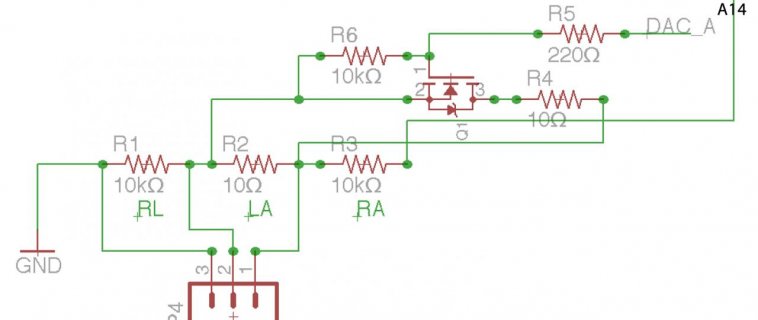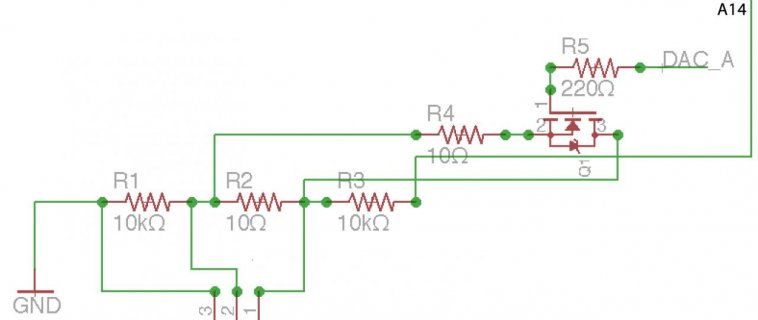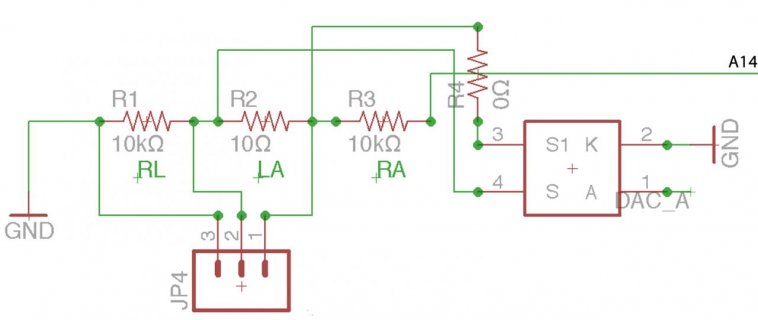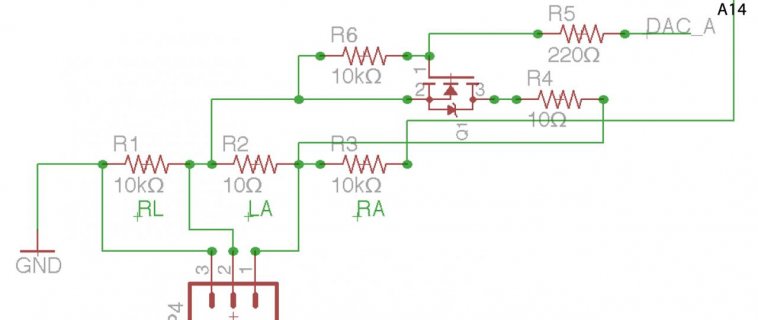I have a situation where I need to lower the resistance:
--- [ 10 ohm ] ---
Total situation is this: GND --L1-- [ 10 k ] --L2-- [ 10 ohm ] --L3 -- [10 k] --- A14 of Teensy 3.1
The basics of the circuit (lower part from the image and as explained above), work very well. But now the next thing.
The 10 ohm resistor part should (now and then) become 5 ohm instead of ten ohm. Tests with another 10 ohm resistor parallel to the current 10 ohm resistor show that this works very well.
But... how do I switch a 10 ohm resistor parallel to the current one?!
I was thinking about a N-channel MOSFET

First of all, would this work? Then, how do I choose proper values for the MOSFET?
Rds ON is important in my case: I of course want it to be lower than 10 ohm.
But the gate source voltage is also important isn't it?
If I correctly interpret this: http://www.electronics-tutorials.ws/transistor/tran_7.html
I guess it should be less than 3V or so?!!
This might be a good candidate: http://nl.mouser.com/ProductDetail/...=sGAEpiMZZMshyDBzk1/Wi3ROP6NWFBlWNC6dc0MzOG0= I think.
My concern with my circuit is that since I am not able to connect the Drain directly to 3.3V or otherwise the Source to GND, that it won't work.
B.t.w. I want to feed the MOSFET with a DAC, although I don't know if that is still needed.
I'm thinking that this might be a better option, but also with mosfets so maybe the same problem?! 5 ohms, so at least low enough: http://www.mouser.com/ds/2/427/vo1400ae-244774.pdf
--- [ 10 ohm ] ---
Total situation is this: GND --L1-- [ 10 k ] --L2-- [ 10 ohm ] --L3 -- [10 k] --- A14 of Teensy 3.1
The basics of the circuit (lower part from the image and as explained above), work very well. But now the next thing.
The 10 ohm resistor part should (now and then) become 5 ohm instead of ten ohm. Tests with another 10 ohm resistor parallel to the current 10 ohm resistor show that this works very well.
But... how do I switch a 10 ohm resistor parallel to the current one?!
I was thinking about a N-channel MOSFET

First of all, would this work? Then, how do I choose proper values for the MOSFET?
Rds ON is important in my case: I of course want it to be lower than 10 ohm.
But the gate source voltage is also important isn't it?
If I correctly interpret this: http://www.electronics-tutorials.ws/transistor/tran_7.html
I guess it should be less than 3V or so?!!
This might be a good candidate: http://nl.mouser.com/ProductDetail/...=sGAEpiMZZMshyDBzk1/Wi3ROP6NWFBlWNC6dc0MzOG0= I think.
My concern with my circuit is that since I am not able to connect the Drain directly to 3.3V or otherwise the Source to GND, that it won't work.
B.t.w. I want to feed the MOSFET with a DAC, although I don't know if that is still needed.
I'm thinking that this might be a better option, but also with mosfets so maybe the same problem?! 5 ohms, so at least low enough: http://www.mouser.com/ds/2/427/vo1400ae-244774.pdf
Attachments
Last edited:




